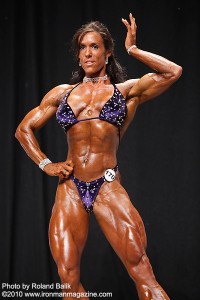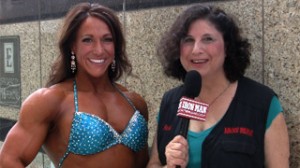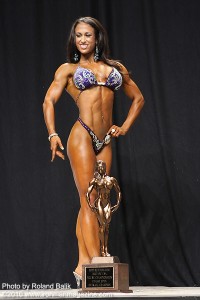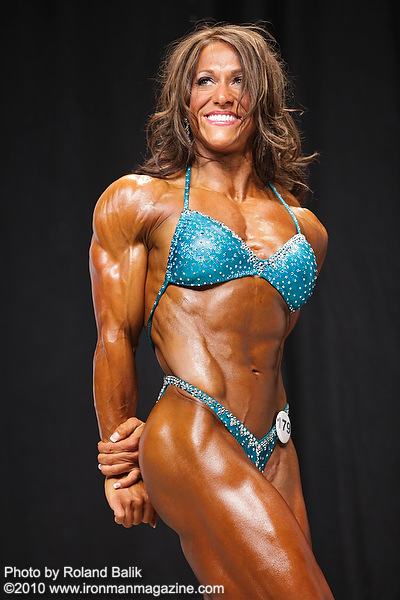A week or so ago I gave in to a bad impulse and replied to a group e-mail discussion among some of my male colleagues at IRON MAN regarding a recent TV segment Bryant Gumbel had done on women’s bodybuilding. The conversation was not long, but it hit all the usual high points. The basic theme was, we started with Rachel McLish, and this is what we got? Not that they didn’t have a point—and the group included people who have photographed Rachel—but you know how it is. Sometimes guys just don’t know how they sound.
My pique took off in a number of directions, not all of which I shared. For one thing, why have all the Bryant Gumbels and all the lesser-known groups who have broadcast segments on bodybuilding over the past, say, five or six years, chosen to feature women’s bodybuilding rather than men’s? For that matter, when was the last time anyone on network broadcast or cable-TV did a feature on men’s bodybuilding? Perhaps I wasn’t so far off when I suggested that the host had picked the interviewee my colleagues were discussing because he wanted to evoke a certain response.
 Also, I had just come back from Las Vegas and the USA Championships full of encouragement that a change was in the wind at last, and the whole conversation seemed so 2009 (1999, 1989…). How could they not know that the big story was that the two female flexers who turned pro in Vegas had been figure competitors just a year or so ago? That there is, in fact, a quiet effort going on in the judging panels of NPC women’s bodybuilding competitions to “fix it”—though I think we can all agree that there’s no going back to a point where the McLish physique would the standard for a bodybuilder. (Business is too brisk in figure and bikini for starters.) The McLish physique as the standard for figure might be a more realistic goal.
Also, I had just come back from Las Vegas and the USA Championships full of encouragement that a change was in the wind at last, and the whole conversation seemed so 2009 (1999, 1989…). How could they not know that the big story was that the two female flexers who turned pro in Vegas had been figure competitors just a year or so ago? That there is, in fact, a quiet effort going on in the judging panels of NPC women’s bodybuilding competitions to “fix it”—though I think we can all agree that there’s no going back to a point where the McLish physique would the standard for a bodybuilder. (Business is too brisk in figure and bikini for starters.) The McLish physique as the standard for figure might be a more realistic goal.
Not to go all Steve Wennerstrom on the history or get sidetracked into the discussion of how we got where we are, but there have always been women who pushed the bounds of acceptable femininity. Even Rachel competed against Kay Baxter and Bev Francis back in the day. The point is to focus on where things can go from here. The NPC seems to be concentrating on sending women bodybuilders to the pros who have good lines and shapes and are not ripped like Jay Cutler on a dry day. A stroll through the USA photo gallery and a shot of the class winners—and pro card recipients—bears that out. At every opportunity the judges chose shape over condition—in the pick of Sarah Hayes for heavyweight and overall honors, in the pick of light-heavyweight winner Jennifer Scarpetta for the second pro card over middleweight victor Mona Murray and lightweight champ Claire O’Connell, a veteran flexer who finally put it all together in a way she never had before and who had a lot of sentiment in the hall running in her favor.
 See my morning-after-the-USA interview with Hayes to get to know this delightful new physique star.
See my morning-after-the-USA interview with Hayes to get to know this delightful new physique star.
As mentioned above, the new pros are both former figure competitors who got tired of being “too muscular.” It’s a trend many of us would like to see continue, but what will happen to all the less ripped ladies when they get to a pro stage? Lonnie Teper asked that question when he joined me on the post–USA women’s wrap-up video for bodybuilding, figure and bikini. My answer: They’ll have to wait till old guard pros start retiring. From a look at the actual Ms. Olympia lineup—not just the list of who’s qualified—that time could be closer than most folks expect. With Betty Pariso retired, Lisa Aukland passing on the show and a couple others reportedly out as well, there is room for some of the newer pros who have excelled—like, say Zoa Lindsey, Brigita Brezovac and Sheila Bleck—to make their marks.
 As to any “new Rachels” who may have come out of the big Vegas pro qualifier, I’ll leave it to readers to determine whether USA Figure Overall champ Courtney West—like Ms. McLish, a Texan—fills that bill.
As to any “new Rachels” who may have come out of the big Vegas pro qualifier, I’ll leave it to readers to determine whether USA Figure Overall champ Courtney West—like Ms. McLish, a Texan—fills that bill.





















You must be logged in to post a comment Login